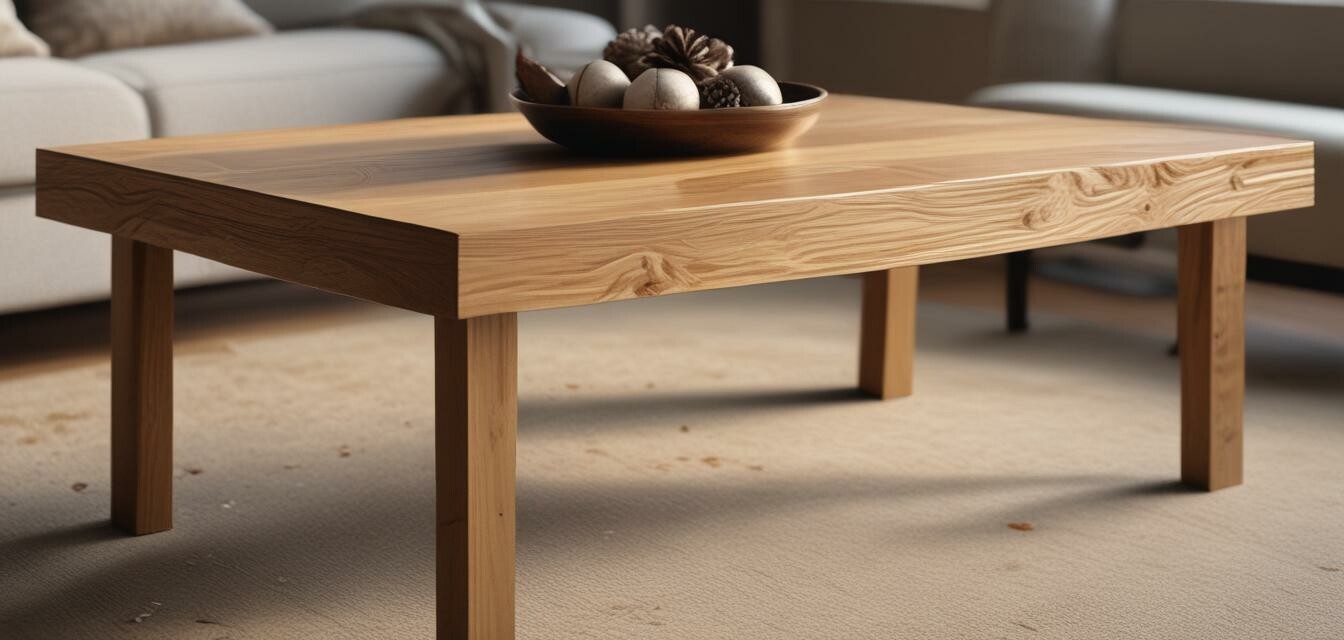
The Impact of Trends on Solid Oak Furniture Prices
- Emerging design trends significantly influence the pricing of solid oak furniture.
- Market dynamics, such as consumer preferences and sustainability, shift price points.
- Understanding the interplay between style and pricing helps buyers make informed decisions.
- Quality craftsmanship remains a key factor in value retention for solid oak tables.
- Stay updated on trends to navigate pricing effectively for your purchases.
In the world of furniture, trends evolve constantly, affecting not only aesthetics but also pricing structures. Solid oak furniture, renowned for its durability and timeless beauty, reflects these fluctuations. Whether you're considering investing in a new dining table or a side table, understanding the impact of current trends on pricing can empower you as a buyer. In this article, we explore how design trends and market dynamics correlate with solid oak furniture prices.
How Trends Shape Solid Oak Furniture Prices
Fashion dictates much of what we purchase, even when it comes to furniture. Let’s break down how emerging trends influence the pricing for solid oak furniture:
| Trend Type | Description | Price Impact |
|---|---|---|
| Minimalism | Emphasizes simplicity and functionality, favoring sleek lines and less ornamentation. | Generally lower prices due to reduced material usage, but premium for well-crafted pieces. |
| Rustic Design | Focuses on natural finishes and reclaimed wood elements, appealing to organic aesthetics. | Can command higher prices as consumers value artisanal craftsmanship and uniqueness. |
| Eco-Friendly Materials | Increased demand for sustainable sourcing influences production costs and pricing. | Often leads to higher price points to cover ethical sourcing and manufacturing processes. |
| Mixed Materials | Integration of materials like metal or glass with solid oak creates modern furniture. | Potential for varied pricing depending on the combination and craftsmanship. |
| Versatile and Multi-Purpose Furniture | Growing demand for furniture that serves multiple functions. | Can lead to increased prices due to complexity in design and versatility. |
Market Dynamics Affecting Prices
Beyond design trends, several market dynamics contribute to how prices fluctuate in the solid oak furniture industry. Understanding these factors can shed light on potential price increases or decreases:
- Supply Chain Issues: Disruptions in timber supplies due to regulations and changing forestry practices often lead to increased costs for manufacturers, influencing retail prices.
- Luxury Market Influence: As luxury solid oak furniture becomes more popular, standard pricing may rise to reflect perceived value, even for more conventional designs.
- Consumer Preferences: Shifts in buyer preferences towards bespoke or customizable furniture provide an opportunity for brands to charge premium prices.
- Seasonal Trends: Trends can peak with seasons or during holidays, resulting in temporary price increases due to demand surges.
- Global Influences: Economic conditions abroad can affect timber pricing and shipping costs, impacting local price points.
Balancing Quality and Price
With the ever-changing landscape of trends and market dynamics, maintaining a balance between quality and affordability is crucial. Here are key considerations:
Tips for Buyers
- Research current trends to anticipate pricing increases or drops.
- Invest in quality pieces that showcase craftsmanship to ensure longevity.
- Consider purchasing during off-peak seasons when prices may be lower.
- Be open to mixing styles to find unique pieces that align with your tastes at a better price.
- Check for sustainable sourcing certifications, which might indicate higher prices but also better quality and ethics.
Conclusion: Navigating the Landscape of Solid Oak Furniture Prices
Understanding the relationship between trends and the pricing of solid oak furniture is essential for anyone looking to make a wise investment. As consumer preferences shift and new styles emerge, prices will continue to fluctuate. By keeping abreast of the latest news and trends in the solid oak furniture industry, you can navigate these changes more effectively. If you want to dive deeper into current trends within solid oak furniture, make sure to explore our latest articles.
Pros
- Solid oak furniture is durable and long-lasting.
- Timeless aesthetic that complements various decor styles.
- Potential investment value due to quality craftsmanship.
- Variety of design options available that cater to current trends.
Cons
- Higher initial price point compared to other materials.
- Price fluctuations due to market dynamics can be unpredictable.
- Heavy weight may make moving or repositioning difficult.
- Requires regular maintenance to uphold quality.